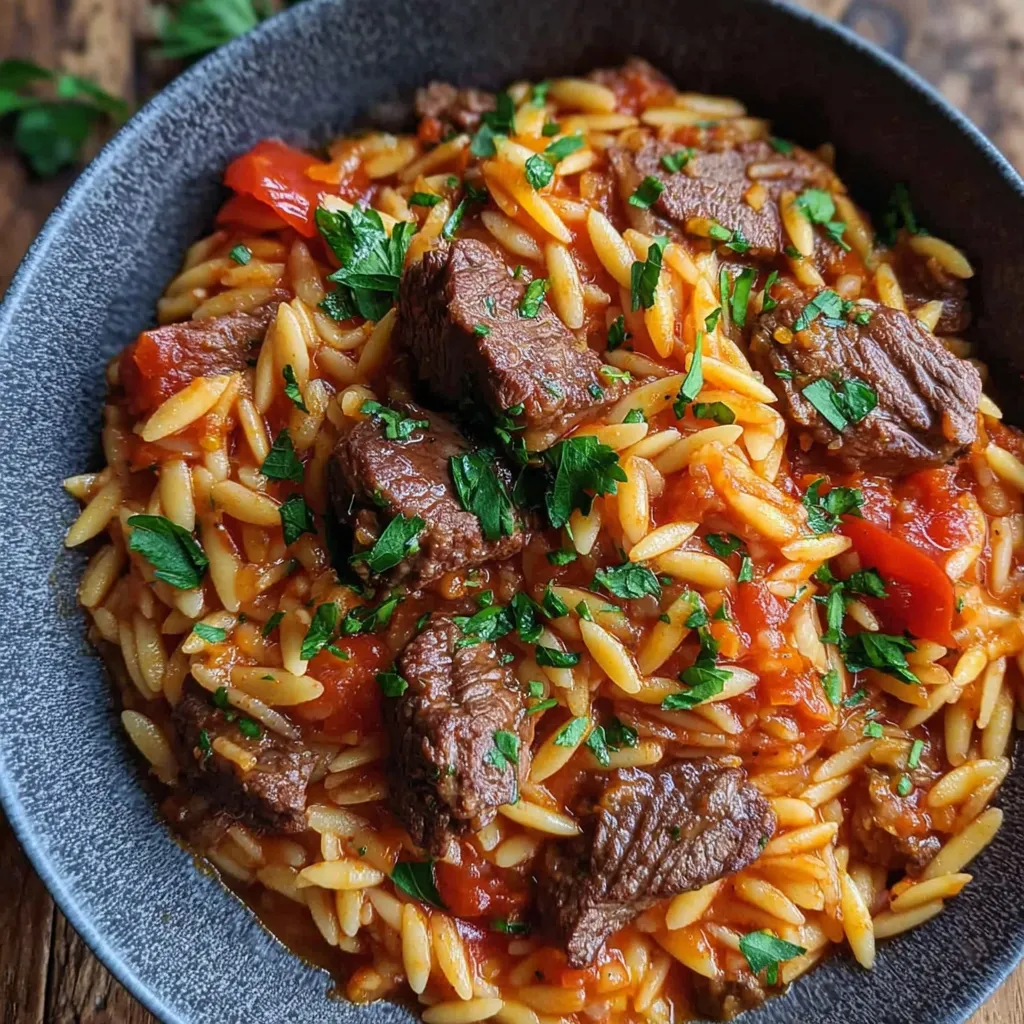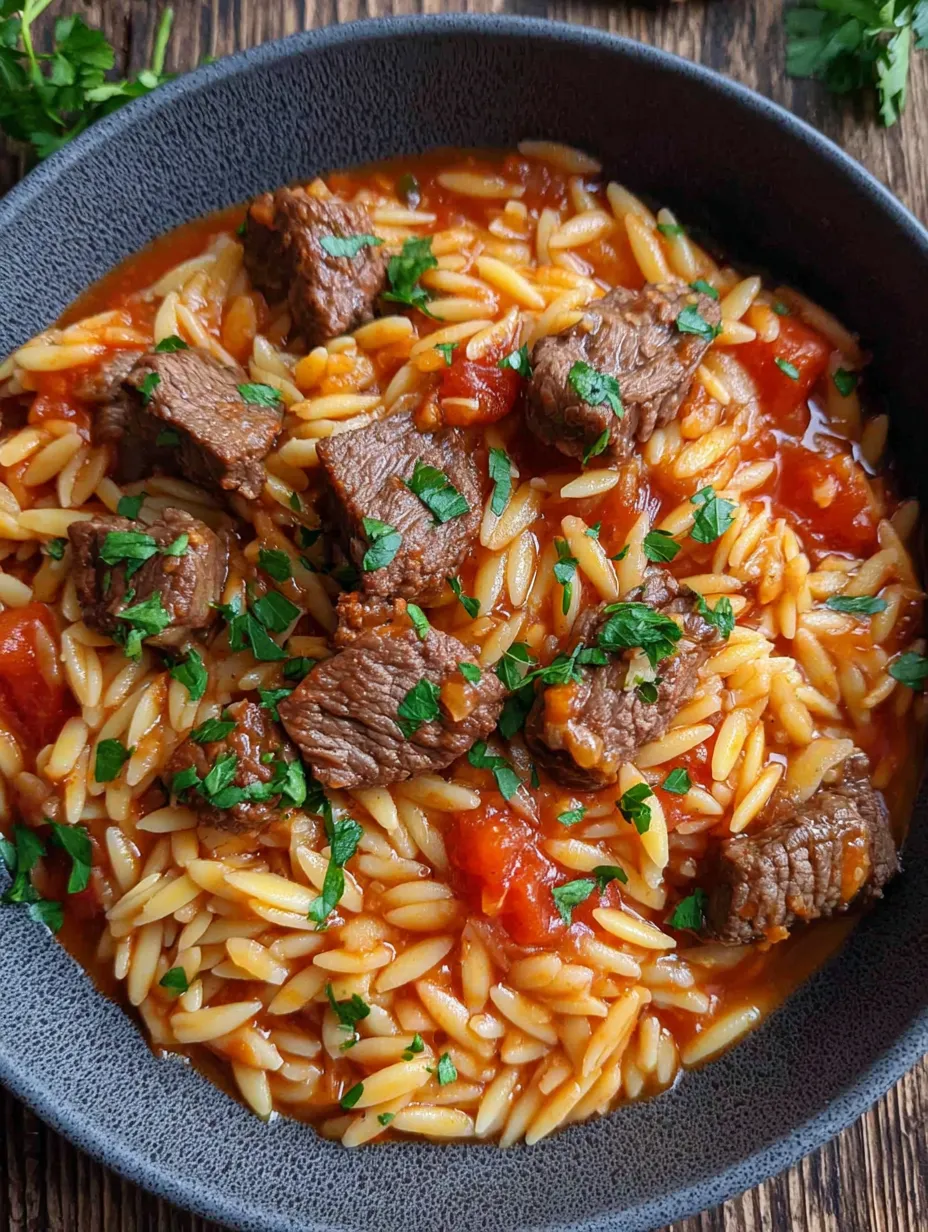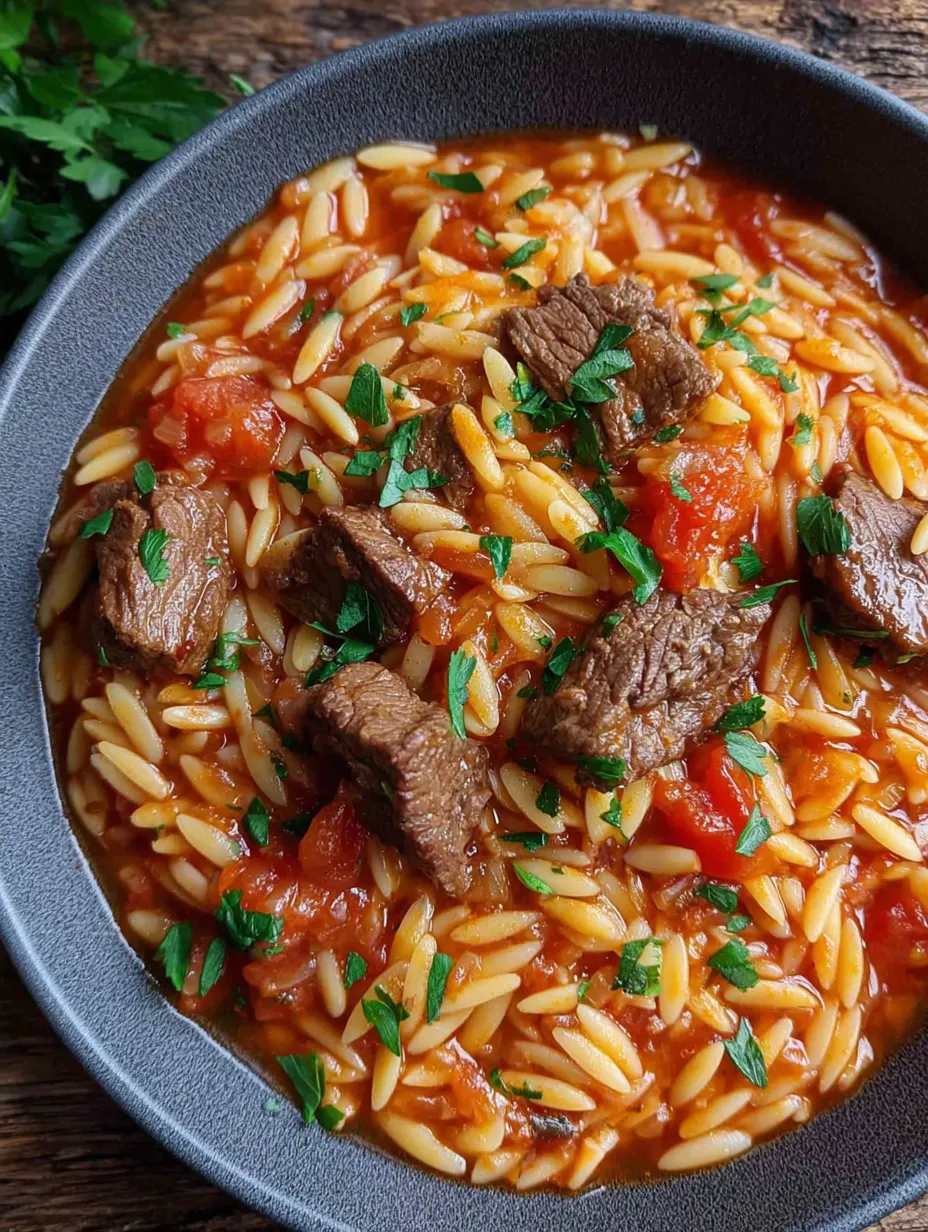 Pin
Pin
Beef Giouvetsi is my answer to cold nights when everyone craves something cozy but a little special. This Greek classic transforms simple beef and orzo into a dish with warming spices and plenty of savory depth. The long simmer makes the beef meltingly tender, and the addition of grated cheese adds that irresistible finishing touch. Every time I bring this pot to the table, it is always gone by the end of dinner.
I first made Giouvetsi when I wanted to impress my in-laws with something both traditional and practical. Seeing everyone go for seconds just made it an instant favorite in my house.
Ingredients
- Beef chuck or stew meat: Gives rich flavor and becomes super tender when slow cooked I always look for well marbled pieces
- Olive oil: Helps brown the beef and enrich the sauce A decent quality olive oil makes a difference here
- Large onion: Finely chopped to give subtle sweetness When shopping choose a firm and heavy onion
- Garlic cloves: Minced for fragrance and depth Always use fresh for the best flavor
- Crushed tomatoes: The base of the sauce Opt for a brand with no added sugar for a purer taste
- Tomato paste: Deepens color and brings umami Find a concentrated paste for richer results
- Beef broth: Adds savory backbone to the sauce Use homemade or low sodium for control over saltiness
- Cinnamon stick: Brings gentle warmth and a classic Greek touch Buy whole sticks and keep tightly sealed
- Bay leaves: Add herbaceous depth Remove before serving to avoid bitterness
- Ground allspice: Provides subtle spice and complexity Only a small amount needed so it is worth buying fresh
- Salt and pepper: Essential for balance Opt for freshly ground pepper for extra kick
- Sugar: Optional but helps cut acidity Taste your tomatoes before deciding
- Orzo pasta: Little rice-shaped pasta that soaks up all the sauce I pick high quality or Greek brands when I find them
- Hot water or more beef broth for pasta: Helps orzo cook through without sticking Use hot so it does not cool the pot
- Grated Kefalotyri cheese or Parmesan: Adds salty finish and richness Kefalotyri is classic Greek cheese but Parmesan is a great sub
- Fresh parsley: For garnish and a pop of freshness Flat leaf tastes best
Step-by-Step Instructions
- Sear the Beef:
- Heat olive oil in a large Dutch oven over medium-high When hot add seasoned beef cubes in batches Brown each side well to develop deep flavor and avoid crowding the pan Once browned remove and set aside
- Prepare the Sauce:
- In the same pot lower to medium Add chopped onions Stir occasionally and cook until translucent and just golden This should take about five minutes Sprinkle in minced garlic and stir until aromatic about one minute
- Layer in Tomato Paste and Spices:
- Add tomato paste and let it toast into the onions for up to two minutes This adds lots of umami Pour in crushed tomatoes and beef broth then add cinnamon stick bay leaves ground allspice and a sprinkle of sugar if your tomatoes are very tangy Mix thoroughly
- Simmer the Beef:
- Return browned beef and its juices to the pot Make sure everything is nestled down into the sauce Cover with tight fitting lid and let it barely simmer over low heat for ninety minutes to two hours The meat should become fork tender and the sauce rich and savory Give it a gentle stir halfway through
- Add the Orzo and Bake:
- Preheat oven to 375 degrees Fahrenheit Uncover pot and stir in orzo so it is evenly distributed Pour in hot water or more broth if the sauce looks too tight You want enough liquid so orzo can absorb but not become soupy Slide pot uncovered into oven and bake for about twenty to twenty five minutes Stir a couple of times so the orzo cooks evenly The pasta should be tender and most liquid absorbed
- Serve Giouvetsi:
- Remove pot from oven Fish out the cinnamon stick and bay leaves for a smooth eating experience Sprinkle with a generous hand of grated cheese and parsley Spoon into bowls and bring to the table while bubbling hot
 Pin
Pin
Storage Tips
Leftovers keep well in an airtight container in the fridge for up to three days To reheat add a splash of hot water or broth and warm gently on the stove or in the oven If the orzo soaks up too much liquid just loosen it with more broth
Ingredient Substitutions
If you cannot find Kefalotyri cheese Parmesan or Pecorino work beautifully For a lighter version try using chicken thigh meat instead of beef but reduce the total cook time Or replace beef broth with vegetable broth for a milder flavor
Serving Suggestions
This dish deserves crusty bread for soaking up all that rich tomato sauce A big Greek salad with olives cucumbers and feta rounds out the meal nicely Sometimes I add a bowl of roasted eggplant dip on the side for extra Mediterranean flair
 Pin
Pin
Cultural and Historical Context
Beef Giouvetsi has its roots in Greek home kitchens and Sunday family dinners Traditional versions use lamb or even goat but beef is most common today The word Giouvetsi actually refers to the clay pot often used to bake the dish though a Dutch oven works great Modern Greek families treasure this meal for its simplicity and soul warming comfort
Recipe FAQs
- → What cut of beef works best for Giouvetsi?
Chuck or stew beef is ideal, as it becomes tender with slow cooking and absorbs flavors from the sauce.
- → Can I substitute the cheese topping?
Yes, if you can't find Kefalotyri, Parmesan or Pecorino Romano are delicious alternatives for a similar savory touch.
- → Is it necessary to bake Giouvetsi in the oven?
Baking gives the dish its signature texture and helps orzo absorb the sauce, though stovetop simmering works in a pinch.
- → Can I prepare Giouvetsi ahead of time?
Absolutely! Prepare up to the orzo step and bake when ready to serve for optimal flavor and texture.
- → What side dishes pair well with Giouvetsi?
Crusty bread and a Greek salad complement the hearty flavors and bring balance to the meal.
